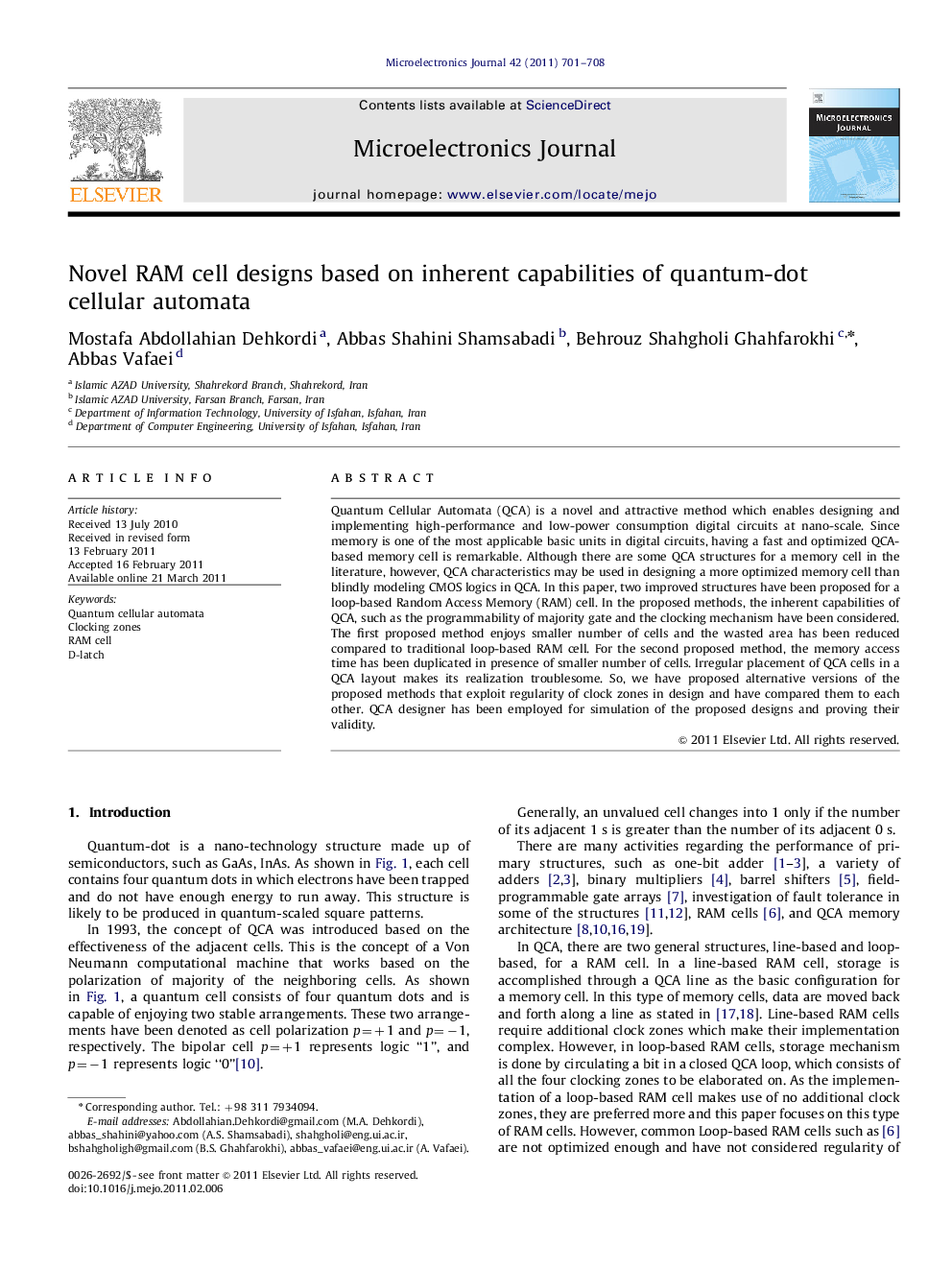| Article ID | Journal | Published Year | Pages | File Type |
|---|---|---|---|---|
| 543529 | Microelectronics Journal | 2011 | 8 Pages |
Quantum Cellular Automata (QCA) is a novel and attractive method which enables designing and implementing high-performance and low-power consumption digital circuits at nano-scale. Since memory is one of the most applicable basic units in digital circuits, having a fast and optimized QCA-based memory cell is remarkable. Although there are some QCA structures for a memory cell in the literature, however, QCA characteristics may be used in designing a more optimized memory cell than blindly modeling CMOS logics in QCA. In this paper, two improved structures have been proposed for a loop-based Random Access Memory (RAM) cell. In the proposed methods, the inherent capabilities of QCA, such as the programmability of majority gate and the clocking mechanism have been considered. The first proposed method enjoys smaller number of cells and the wasted area has been reduced compared to traditional loop-based RAM cell. For the second proposed method, the memory access time has been duplicated in presence of smaller number of cells. Irregular placement of QCA cells in a QCA layout makes its realization troublesome. So, we have proposed alternative versions of the proposed methods that exploit regularity of clock zones in design and have compared them to each other. QCA designer has been employed for simulation of the proposed designs and proving their validity.
